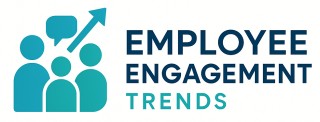
Defining Commercial Fringe Benefits
What Are Commercial Fringe Benefits?
Commercial fringe benefits are additional perks or rewards provided by employers to their employees beyond their regular wages or salaries. These benefits can take many forms, ranging from health insurance and retirement plans to more unique offerings like personal assistance services or gift cards. Employers offer these incentives to enhance job satisfaction and motivate their workforce, leading to improved employee engagement, which is the focus of many current strategies. Fringe benefits fall into two categories: taxable and non-taxable. Taxable fringe benefits contribute to an employee's taxable income, such as certain types of health insurance premiums or personal company cars. In contrast, some fringe benefits, like certain life insurance policies up to a particular value or dependent care assistance, can be tax-free and do not add to taxable wages. The distinction between these types is crucial because misclassification can lead to unexpected tax expenses for both employees and employers. Understanding the nature of these benefits, along with their tax implications, is essential for businesses seeking to structure appealing and efficient compensation packages. It is worth noting that the perceived value of these benefits can significantly influence employees' attitudes and performance. In today's competitive labor market, companies need to offer attractive and relevant benefits packages to stand out. For those interested in how to improve employee performance and satisfaction through additional incentives, considering productivity coaching as an innovative approach might prove beneficial. Delving into enhancing workplace efficiency through productivity coaching can provide further insights.The Impact on Employee Engagement
Exploring the Influence on Workforce Involvement
Commercial fringe benefits play a pivotal role in enhancing employee engagement within organizations. Employers who offer a well-rounded package of fringe benefits often witness heightened enthusiasm and dedication among their workforce. This is largely because these benefits cater to the diverse needs and personal preferences of employees, leading to increased motivation and satisfaction.
By incorporating elements such as health insurance, dependent care assistance, and achievement awards, employers can show their commitment to both the professional and personal well-being of their staff. When employees feel supported through dependable benefits provided, it naturally leads to a more engaged and committed workforce. For instance, ensuring access to comprehensive health insurance and providing options for life insurance without added expenses are powerful tools for employee retention and attraction.
Fringe benefits such as gift cards or gym memberships, while often small in value, can also significantly boost morale when offered as part of a larger rewards system. They demonstrate an employer's keen interest in the personal life of the employee, providing an encouraging environment that fosters business loyalty and pride.
Furthermore, understanding and effectively managing the tax implications of these benefits is paramount. While some components are tax-free, such as certain health insurance options, others can contribute to an employee's taxable income and may impact their taxable wages. This can sometimes create complexity in how these benefits are executed and perceived.
In conclusion, the strategic implementation of commercial fringe benefits is more than just an additional perk—it's a crucial factor in stimulating employee engagement. It's about creating a balanced package that reflects the values and needs of the workforce. For more insights into how businesses are enhancing employee engagement through strategic HR practices, explore further discussions on effective document management.
Common Misconceptions
Debunking Myths Around Fringe Benefits
When it comes to fringe benefits, numerous misconceptions exist that can cloud understanding and complicate implementation for both employers and employees. Clearing these misunderstandings is crucial for maximizing engagement and ensuring that employee benefits truly serve their intended purpose.
First, many assume that all fringe benefits are inherently taxable. While this may apply to several types of benefits, there are certain benefits offered by employers that remain tax-free under specific conditions. For example, employer-provided health insurance is often not considered taxable income, which can make a significant difference in an employee's taxable wages.
Another common misconception is that fringe benefits solely encompass traditional options like health insurance and retirement plans. In reality, employers can include a broad range of benefits, from dependent care assistance to achievement awards. By understanding the fair market value of these offerings, businesses can better navigate the impacts on taxable wages and tax benefits.
Moreover, there is a belief that fringe benefits primarily benefit the employer by providing tax advantages. Although employers do receive certain tax benefits, the primary goal of offering such benefits is to enhance employee satisfaction and engagement. Properly channeled, these offerings can also significantly reduce expenses related to recruitment and turnover.
As companies strive to meet diverse employee needs, it is essential not to overlook personalized and non-traditional benefits. Contrary to the idea that cash bonuses or gift cards are the only appealing options, personalized fringe benefits can lead to enriched employee experiences without incurring additional taxable income.
To further explore affordable ways companies can improve employee morale and engagement, consider these ideas for showing appreciation to your team, which can supplement more formal fringe benefits programs.
Tailoring Benefits to Employee Needs
Customizing Benefits to Meet Employee Expectations
In today's competitive business landscape, understanding how to effectively tailor fringe benefits to meet employee expectations is crucial for any employer. Offering a one-size-fits-all package may not meet the diverse needs of your workforce. Instead, taking a personalized approach can lead to higher employee satisfaction and engagement. By customizing benefits, employers can better align with the specific needs and preferences of their employees, thus nurturing a more committed and engaged workforce. Here's why it makes a difference:- Enhanced Flexibility: Offering a mix of benefits ranging from health insurance to paid time off allows employees to select the options that best fit their lifestyle. For instance, younger employees might prioritize student loan assistance, while those with families could value dependent care support or comprehensive health insurance plans more.
- Recognizing Diverse Needs: Different employees have different personal and professional needs. Providing options like achievement awards, tax-free fringe benefits, or even gift cards as spot recognition can address the unique motivations of individual team members, leading to boosted morale and productivity.
- Financial Savings and Income Balance: Tax implications can often deter the provision of certain benefits. Understanding the difference between taxable and non-taxable fringe benefits can help employers design offerings that maximize the value for employees while minimizing taxable income implications. For example, offering benefits that are considered non-taxable fringe, such as certain types of life insurance or health insurance, can create a fair market advantage by reducing taxable wages.
Challenges in Implementing Fringe Benefits
Overcoming Implementation Barriers
Implementing commercial fringe benefits is no walk in the park. Although these benefits can propel business dynamics and enhance employee engagement, several challenges may arise during the implementation phase. Firstly, navigating the complex web of tax regulations stands as a significant hurdle. Employers must distinguish between taxable fringe benefits and tax-free advantages. For example, while benefits like health insurance fall under tax-free categories, others like certain gift cards end up as taxable income. Failure to correctly classify these could lead to increased taxable wages for employees, turning what was intended as a perk into a burden. Moreover, the diverse needs of employees mean that a one-size-fits-all approach often falls short. Tailoring benefits to address varying employee needs involves extra time and meticulous planning. Balancing standard offerings like health insurance with personalized options, such as assistance in personal and family care, demands insights into employees' lives outside work. Also, the management of expenses related to offering fringe benefits can strain company resources. For businesses, accurately determining the fair market value of benefits provided, such as company cars or achievement awards, is essential to prevent under or over-evaluating their worth. Lastly, ensuring that all employees perceive fringe benefits as equitable can be tricky. It's crucial to clearly communicate the value and purpose behind each benefit, thus avoiding misconceptions about who qualifies for certain perks. In summary, while integrating fringe benefits into employee incentives can greatly influence engagement and satisfaction, employers should anticipate potential operational challenges and strategize accordingly.Future Trends in Employee Benefits
Paving the Way for Tomorrow's Employee Benefits
The landscape of employee benefits is continually evolving, shaped by changes in business needs, employee expectations, and regulatory requirements. As we look to the future, there are several trends that employers should keep in mind when considering their benefits packages.- Customization and Personalization: Today's employees value flexibility. Personal company benefits that cater to individual needs, from health insurance options to dependent care assistance, can make a significant difference. Employees appreciate when benefits are not only comprehensive but also relevant to their personal and professional lives.
- Emphasis on Work-Life Balance: The shift towards remote and hybrid work models has amplified the focus on work-life balance. Employers may increasingly offer benefits such as flexible working hours, paid time off, and wellness programs to support employees' personal well-being.
- Technological Integration: As technology continues to advance, benefits platforms are becoming more sophisticated. This can involve using apps for managing benefits expenses or platforms that provide employees with access to their fringe benefits. Employers can offer enhanced digital experiences for benefit enrollment and management, aligning with employees' expectations for convenience.
- Healthcare Benefits Evolution: With healthcare costs on the rise, employer-provided health insurance will remain a crucial part of benefits packages. However, additional offerings like mental health support and telemedicine services are becoming more common, reflecting a holistic approach to employee wellness.
- Sustainability and Ethical Considerations: Younger employees, in particular, are increasingly concerned with the ethical practices of their employers. Businesses that integrate sustainable and ethical practices into their benefits—perhaps through green initiatives or company-wide incentives for volunteering—can attract and retain talent who share these values.
- Tax Efficiency and Compliance: As tax laws evolve, especially those concerning tax-free and taxable fringe benefits, employers will need to stay updated to ensure compliance and maximize benefits for employees without increasing taxable income unnecessarily.













